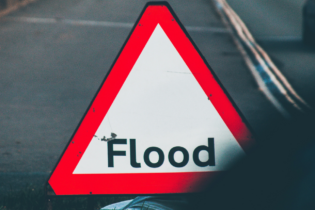On November 17 this year, South Africa’s Minister of the Department of Environmental Affairs, Edna Molewa, addressed international officials at the 2nd INTERPOL-UNEP Environmental Compliance and Enforcement Conference in Singapore.
“I address this conference today at critical time when the seriousness of environmental crime is no longer in question. “We also note that during the recent times, environmental crime is being dealt with at the highest levels of governments across the world, with numerous resolutions and commitments being made, as part of the collaborative international effort,” said Molewa. The Minister stressed that it goes without saying that the increase in environmental crime must be recognised as crime mainly driven by greed. Threat analysis The INTERPOL-UNEP report titled; “The Environmental Crime Crisis; Threats to Sustainable Development from illegal Exploitation and Trade in Wildlife and Forest Resources”, estimates the monetary value of environmental crime to be worth between USD70 and US$213 billion annually. “Environmental crime does more than threaten the world’s natural resources. It also results in financial burden and loss of economic and development opportunities in States. It is a real threat to security and the rule of law,” said the Minister. Crime in contextAccording to Molewa, many of these crimes must be understood within the context of globalisation and the rise in disposable incomes. As the demand for these illegal wildlife products grows, the interest in purchasing wildlife products and access to markets widens. Opportunities are then created for transnational organised crime to exploit.
“As a country richly endowed with natural resources, South Africa is not immune to these challenges. Environmental crime threatens to undermine our country’s rich conservation history. Unfortunately, our rich biodiversity is proving to be our Achilles heel. These transnational criminal syndicates target our iconic species.” The most visible of these currently in South Africa are illegal activities targeting our wild cycads, abalone and the illegal killing of rhinoceros for its horn. These are some of the best understood environmental crimes where local police forces can be called to intervene. There are also many other crimes which are more difficult to enforce. Examples include sand mining, and illegal air and water pollution by heavy industry and even utilities. Government response Apart from revealing government’s plans fo responses to combat poaching, Molewa also noted, “It is imperative that we formulate our responses to specifically eight out of the twelve targets of this Sustainability Development Goals.” These are as follows:- Promote the rule of law at the national and international levels and ensure equal access to justice for all.
- By 2030, significantly reduce illicit financial and arms flows, strengthen the recovery and return of stolen assets and combat all forms of organised crime.
- Substantially reduce corruption and bribery in all their forms.
- Develop effective, accountable and transparent institutions at all levels.
- Ensure responsive, inclusive, participatory and representative decision-making at all levels.
- Broaden and strengthen the participation of developing countries in the institutions of global governance.
- Strengthen relevant national institutions, including through international cooperation, for building capacity at all levels, in particular in developing countries, to prevent violence and combat terrorism and crime.
- Promote and enforce non-discriminatory laws and policies for sustainable development.








